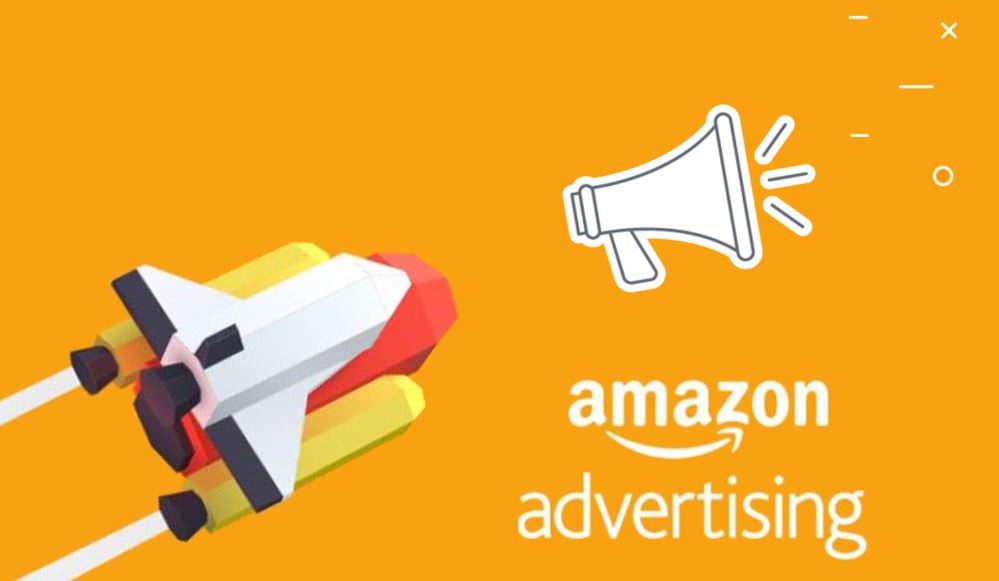2. How Expert Advertisers Target

I’ve touched on the differences between targeting at low bids and targeting at higher bids. Now’s the time to dig deeper into that.
Impression volume is turning on the tap. You need to get impressions first in order to get clicks. And you need clicks in order to get conversions.
One strategy to gain impression volume is to bid as widely as possible. The more ads you have, weighed down with keywords like a monkey scampering away from a banana plantation, the more impressions you get.
So far so good. Amazon caters for this. Should you wish, you can run category ads.
In my case, I might run an epic fantasy category ad. This targets all books listed in the category. That’s a lot. A whopping lot. There’re enough bananas there to feed an army of rampaging monkeys. The potential impression volume is massive to the power of ten.
But I write traditional-style epic fantasy. The category, though, is a mixed bag of other things. First, there’s grimdark versus noblebright – the more traditional flavor of epic fantasy. People tend to read one or the other. Much less often they read both. So, in a category ad, my noblebright books are being shown indiscriminately to grimdark readers. And those folks are numerous.
I’ll get impressions here, and lots of them, but those grimdark readers won’t convert on my books.
But things get worse. Extremely popular just at the moment in the Amazon store is reverseharem fantasy. It should have its own category, but it gets lumped in with epic fantasy. My mind boggles at what Tolkien would have thought of that, but I digress.
And if reverse harem isn’t enough, litrpg fiction (literary role playing game fiction, which again should have its own category) is thrown in with epic fantasy too.
There are other things in this mixed bag as well. For instance, character driven versus plot driven stories and epic fantasy romance.
My noblebright book ad could be shown on all these books in a category ad. It (potentially) gets a massive impression volume, but perhaps only twenty percent of the impressions are on similar noblebright books. And that’s where the readers I want to reach are mostly hanging out.
I said potentially massive impressions. But I have to win the bid auction first to be a chance of being seen.
And who am I bidding against? Authors of grimdark fantasy. Authors of litrpg books and of epic fantasy romance. I’m competing against them, but for what? To be seen on something like a grimdark book where, for the most part, my audience doesn’t hang out.
Even if I win the auction, I lose. My target audience isn’t there. Impressions that don’t have the potential to turn into conversions are wasting everyone’s time.
The shoe fits on the other foot too. Authors of grimdark are in the same boat, bidding to try to win auctions for visibility on a reverse harem book. Reverse harem authors are … you get the picture.
If you believe in the click is a click is a click theory, you’re waving your hands around for attention right now. Yes, I know, and you’re right. On Amazon ads, we don’t pay for impressions but for clicks. This means that all those wasted impressions are irrelevant. It’s only a click we pay for, and if someone clicks that means we’ve found someone who’s interested in our book.
You’re right. Some of the time. Just because someone’s looking at a reverse harem book doesn’t mean they don’t read epic fantasy. If they do, and they see my book and click, they might buy.
But not everyone who clicks studies the title, cover and blurb-snippet first. They’re on a reverse harem book. Most of the books in the also-bought carousel will be reverse harem books. The background expectation of that customer is that the things they’re seeing on that page relate to reverse harem.
Click. How long do people study ads before they click? Click. Not long. Click. People have trigger fingers. Click. Clicking is easy, and back-clicking is too when their internet surfing takes them in a direction they don’t want to go.
Advertisers pay for these clicks. And they pay for them with no chance of a conversion. Really, the click is a click is a click theory makes me sick to my stomach. People often bleed money because they’ve been taught PPC advertising by the inept and clueless.
This is why well-targeted ads have higher click through and conversion rates.
Of course, not all broad-targeted clicks are wasted. I could be advertising a nonfiction book about curing back pain on an Agatha Christie novel. Or on a reverse harem book. Or on a how-todate guide. I’m going to get a portion of “false expectation” clicks, but anyone, no matter their reading preferences, can suffer from back pain.
That situation is a genuine click with a genuine chance of conversion. But the idea of targeting is to stack the deck in your favor. The more you do that, the better you can convert. The higher your conversion rate, the higher you can bid. This turns on the tap. You get a bigger stream of highly targeted and higher converting clicks.
This is why broad targeting uses low bids. Most clicks don’t convert, so the bid has to be low to try to make up the difference in sheer volume of impressions.
It can work. Occasionally. When it does, it’s usually for a nonfiction book that has broad appeal to a wide range of the population. In fiction, it tends to work better for thrillers and romance, because they’re the most widely read genres.
On the whole though, broad targeting is torching your money.
Try it, and see if it works for you. You may have a book that resonates across a wide audience.
Study your click-through rate. Study your conversion rate. See if you can break even this way.
Few can. If you’re one of them, go with it.
As an aside, it’s worth noting that not all categories are as messed up as epic fantasy. If you have a homogenous category, where the majority of books are actually fairly similar, broad targeting may work. But most categories are as bad or worse than epic fantasy.
So far, we’ve really covered a what-not-to-do scenario. In general, poor targeting gives poor results. The better you target, the better your results.
Category ads are about as broad as you can get. Refining that down, you can start to target by genre. This requires manual entry of keywords when setting up the ad. You have to find keywords that match your book’s genre.
This tends to produce better results. You can match romance to romance, epic fantasy to epic fantasy, dystopian to dystopian etc.
Like I say, this will likely give you better results. But that doesn’t mean good results or break-even results.
People don’t really read by genre. They read by subgenre. Expectation is still just as much at play as it was before. Someone looking at a billionaire-bad-boy book has an expectation that an ad on that book’s page is going to be for something similar. If the ad takes them to a second-chance romance, there’s still a high likelihood of a disconnect.
That’s not to say that some readers don’t like both types of books. But PPC advertising is a numbers game. The more numbers you can herd into your corner, the bigger your army. The more deserters you have, the smaller your army.
And the bigger army generally wins. What loses is thinking you have a big army (lots of impressions and clicks) when in reality you’re paying a fortune for food and equipment for deserters who aren’t even there.
Expectation is a big thing. It’s been discussed in previous books in the series in relation to copywriting that the human brain doesn’t really like to think. Thinking takes energy and effort. And most of the time it’s not necessary. Instinct, learned behavior patterns and unconscious decisionmaking shape most of our everyday actions rather than rigorous analysis.
You don’t need to think of it in order to breathe. Or walk. Or tie your shoelaces. Here’s another way to look at it. This is a series of numbers.
Two.
Four. Six.
What’s the next number in that list?
It’s eight, isn’t it? Of course, in theory, it could be any number, for instance five. This would have created a pattern of a three-letter number followed by a four-letter number. There were no rules. But your brain was lulled into the more obvious pattern, took the easy route, and an expectation was formed. For those interested, this is what neuroscientists call the adaptive unconscious. It makes decisions behind your back.
Back to books. The concept is no different when a prospective buyer is browsing the Amazon store. They’ve clicked on a book cover of a certain type. The blurb reinforced it was that type of book. But maybe it’s too expensive and they don’t buy it. They click on an also-bought. It, too, is the same type of book. The pattern has formed and been reinforced. But they realize they’ve read this a year ago. Then they see a cover that stands out in the ad carousel, and click it. They’re now on your book.
You’ve paid for that click. But on reading the blurb, the prospect realizes it’s for steamy romance and not the sweet romance they were looking for. Or it’s grimdark fantasy rather than noblebright fantasy. Or it’s … you get the drift.
You’ve paid for the click, but you were never going to get the sale. Now, repeat the process with customer after customer. Every once in a while, you might find a clicker who reads more widely. You’ll get some sales. But, generally, not enough to break even. Often, you’re torching money.
Customer expectation counts. It counts big time. But the good news? You can flip this on its head. You can make those expectations work for you instead of against you.
How do you do this?
You do it with targeting. You do it with laser-like targeting. You find those patterns and you make sure your book is an eight.
Subgenre is one of the patterns. When picking your targets, look for the patterns that match. Is your cover similar to the target’s cover? And the blurb? Does this give off a similar vibe in terms of story? Is the age of the hero similar? Their sex? Does it look like a plot-based book or a characterbased book? What about the style of writing? Does it belong to a long series, while yours is a standalone?
You’re looking for similarities on all these points. You don’t have to be identical though. If that were the case, you could never target anything but your own book.
Are there other patterns? Yes. Is the author male or female? Often, female authors are read by females and male authors by men. If you doubt this, pick some female authors at random and look at who predominantly leaves them reviews. It’ll mostly be females. The same applies for men (but not as much).
For sure, there are exceptions. A lot of them. If in doubt, look at the names of the reviewers. That will tell you if you’re dealing with one or not.
There are still more patterns. Buyers of traditionally published books tend to buy traditionally published books. Buyers of indie books tend to buy indie books. Again, confirm this by looking at the also-boughts of the book in question.
This is how you refine targeting to highly optimized levels. This is how you weed out keywords that will drain your budget for little benefit.
Choose your target keywords wisely. Fit to the pattern. This increases your conversion rate and allows you to bid high enough to get more impressions. And in this case, turning on the tap brings you a stream of not just impressions but of conversions.
Don’t take my word for this stuff. Put it to the test. Run comparison ads along the lines above. Trial it. You’ll find that the closer you meet the pattern of expectation the higher CTR and conversion rate you get.
When this fails, it’s gold. Go back and look at the patterns. You thought everything matched, and you got a high CTR (indicating high prospect interest) but ended up with low conversions.
Why?
Something in the pattern didn’t match. This is how you learn nuances even within your own subgenre that you’ve been reading and writing in for years. Those nuances matter. Targeting matters. Expectations matter.
Targeting wide is guessing.
Don’t guess. Know.
When you have one or more laser-targeted
ads working well and making a profit or breaking even (depending on your
strategy) then you can try to expand. Start some ads on keywords that don’t
quite meet the pattern of your book, but where there may be crossover. Prepare
for many of these ads to fail, but not all of them will.




